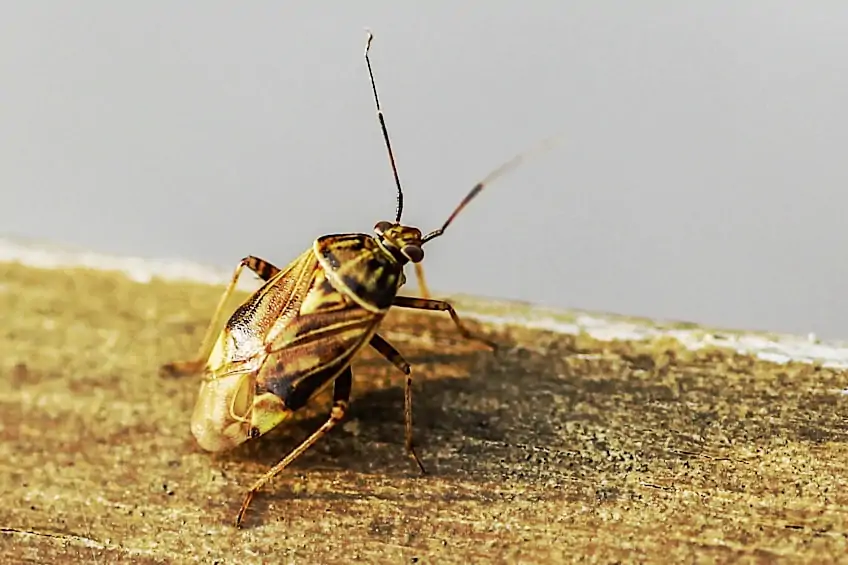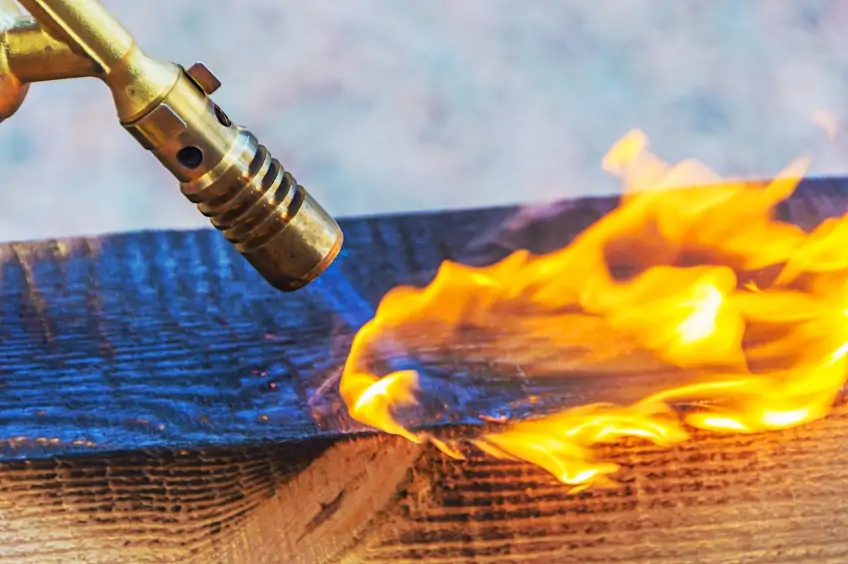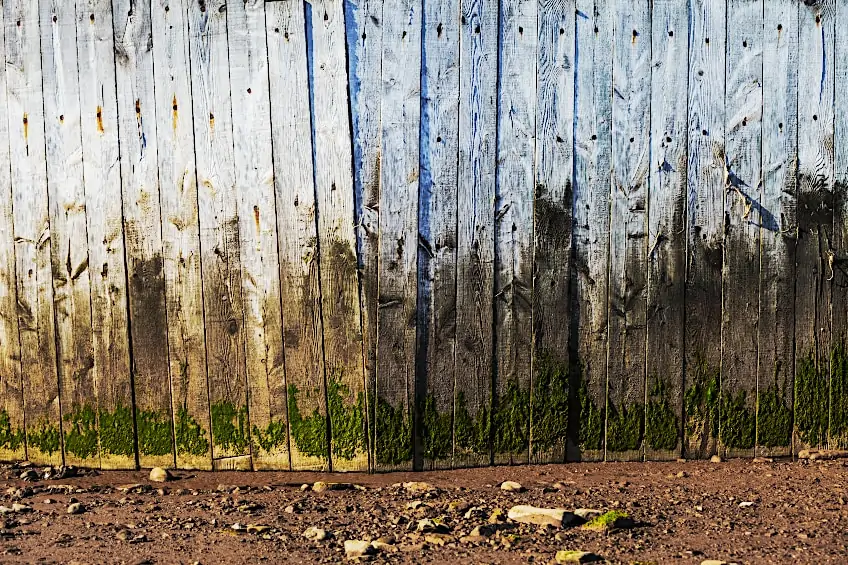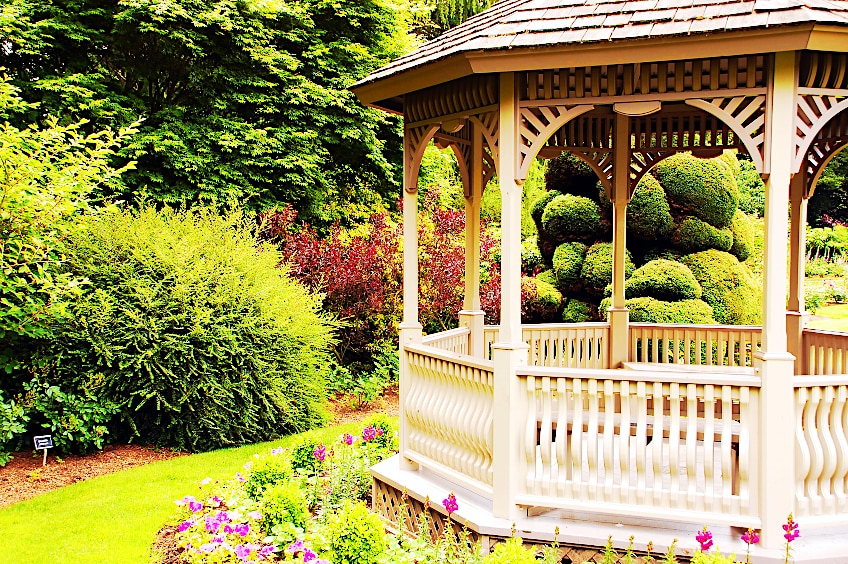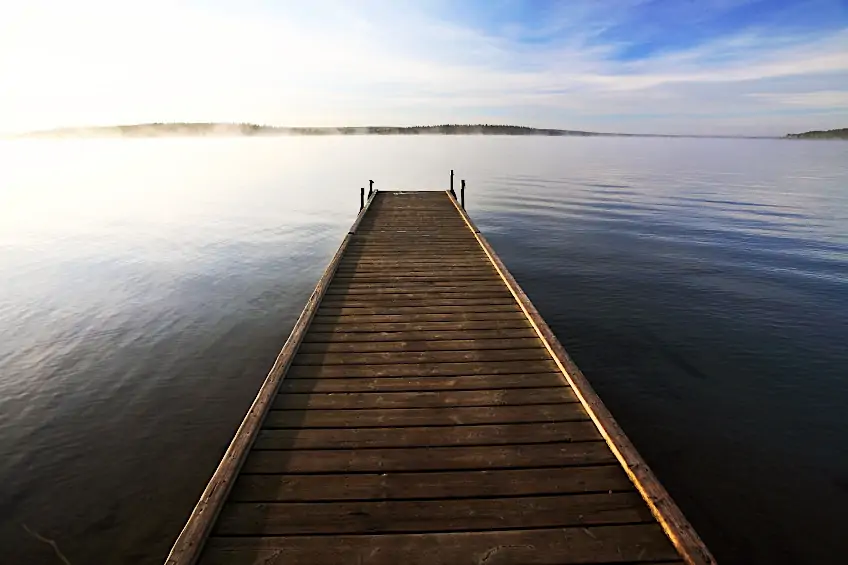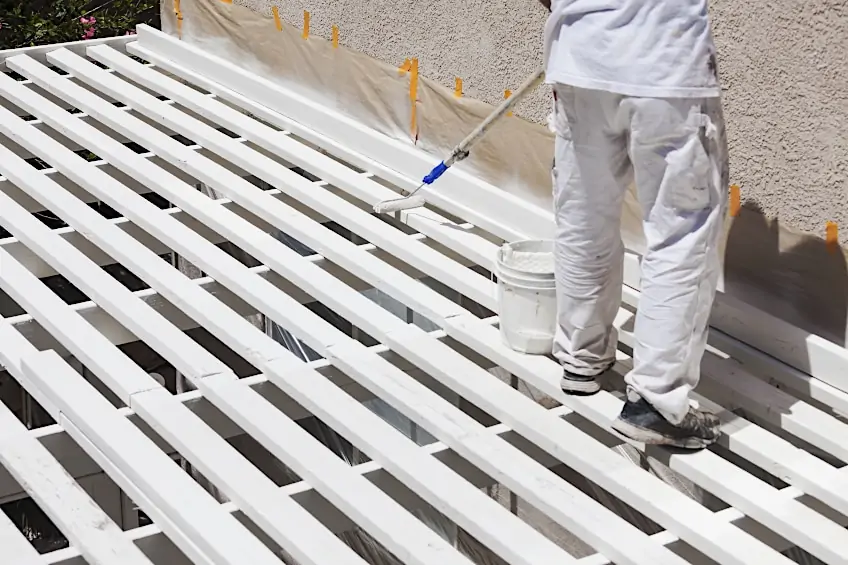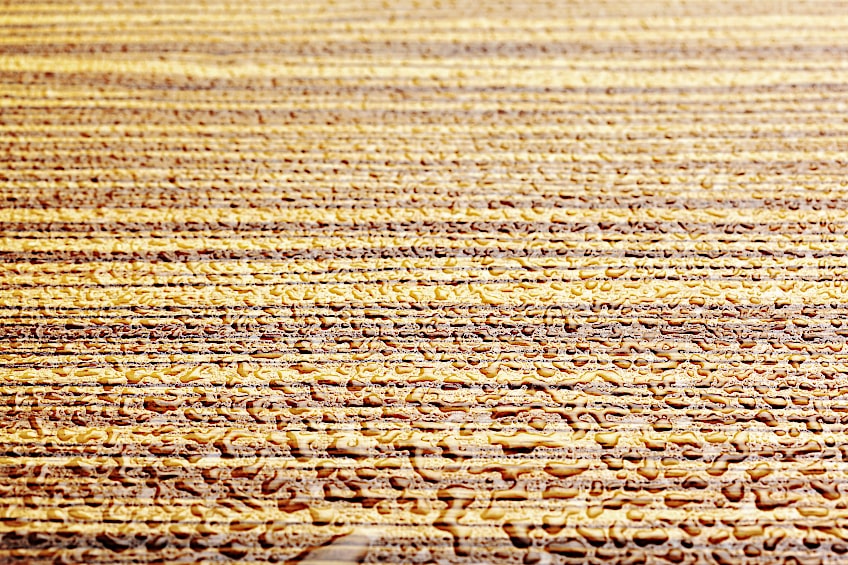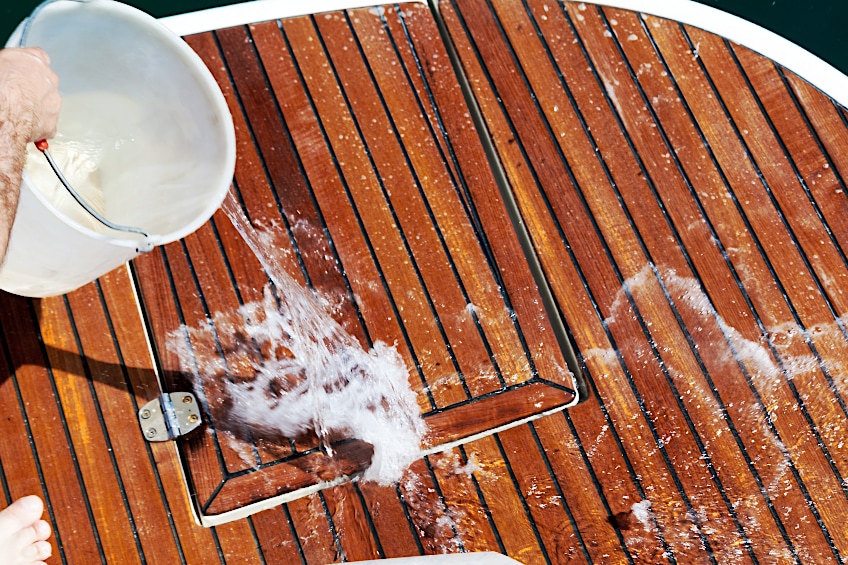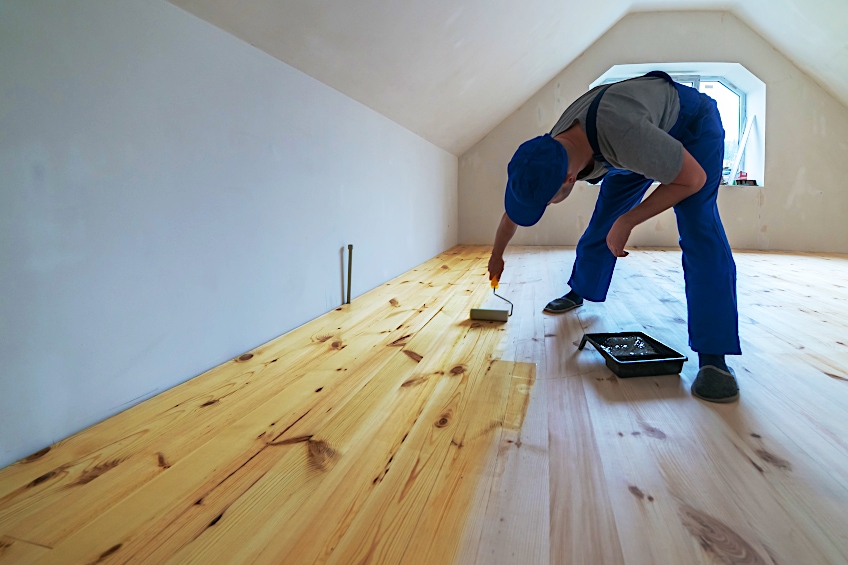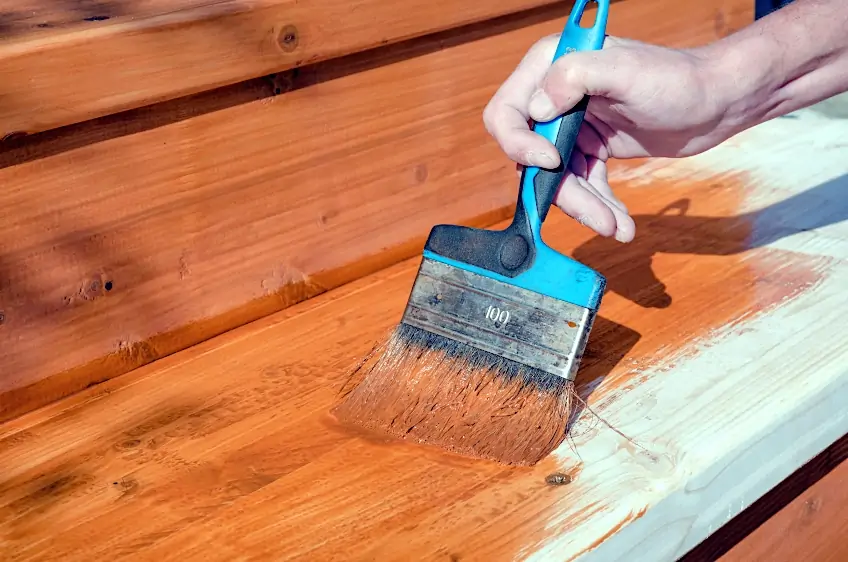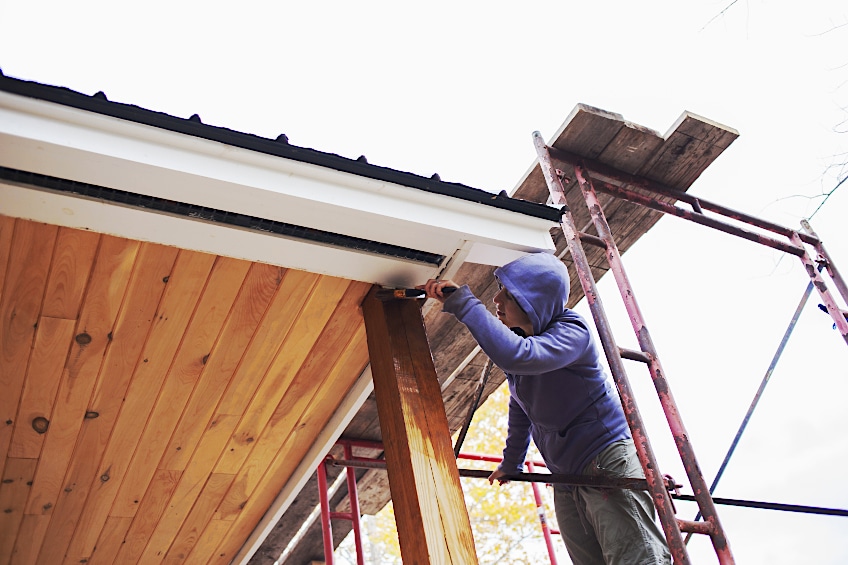Best Primer for Pressure-Treated Wood – Painting Chemical Infused Wood
This post may contain affiliate links. We may earn a small commission from purchases made through them, at no additional cost to you. You help to support resin-expert.com
When it comes to exteriors, choosing pressure-treated wood is a wise move! This is because pressure-treated wood stands up to the elements and also resists the onset of decay fungi. You have opted for pressure-treated wood and are hoping to apply a lick of paint to it. While painting pressure-treated wood is doable, there are some aspects to consider before you do so. Later, we will take a look at the nature of wood that has been pressure treated. We will also advise you on the best practices such as priming pressure-treated wood! Stay with us to learn more!
Table of Contents
What is Pressure-Treated Wood?
Pressure-treated wood not only helps your exterior wood to resist the elements but also prevents insect infestations! Pressure-treated wood can also resist water damage, mold, and in some cases, fire! In this section, we will take a dig deep into the world of pressure-treated timber. We aim to better understand what we are dealing with, which will help us to make an informed decision when selecting the best primer for pressure-treated wood!
What is Pressure Treating?
Wood is pressure treated by being placed into an airtight steel chamber. All the air is removed from the chamber to create a vacuum before the treatment chemical is pumped in. The extreme pressure forces the chemical deep into the pores of the wood.
Once this process is complete the wood is treated and the only thing left is for the wood to be dried and allowed to cure before being shipped off! You should note that pressure-treated wood can stay damp for a while. It is for this reason that you will need to allow enough time for it to dry before priming pressure-treated wood and painting it.
Painting on damp wood will result in chipping, peeling, and lifting of the paint from the surface of the wood.
Types of Pressure Treatment
There are quite different types of pressure treating for wood available. Some of them are specifically meant as fire retardation. Copper Azole is a popular pressure treatment chemical for wood. It has impressive fungi, termite, and mold resistance. It also lasts a long time!
Another chemical used to pressure treat wood is Chromated Copper Arsenate or CCA. This has been used for decades! Wood that has been treated with CCA is easy to recognize by the greenish tinge it makes on the wood. Just like Copper Azole, it provides long-lasting protection from insects and fungi!
These are used in both interior and exterior applications. Some pressure-treated wood will undergo further treatment in a kiln. This is called kiln-drying. This process brings down the moisture content which can make the wood easier to work with. It will also prevent moisture-related issues like bowing and warping.
Types of Pressure-Treated Wood
As the name suggests, above-ground treated wood is intended for use above ground. This type of wood should not be used for structures like fence posts, as the chemical that has been used to treat it is likely to soak into the moisture in the ground. Pressure-treated wood that is intended to be exposed to soil and moisture is referred to as ground-contact pressure-treated wood. Lastly, marine lumber is the toughest type of treated wood and is intended for docks and seaside structures.
| Types of Pressure-Treated Wood | Purpose |
| Above-Ground Pressure-Treated Wood | Ideal for above-ground structures such as window sills |
| Ground-Contact Pressure-Treated Wood | Ideal for contact with the ground such as fence posts |
| Marine Lumber | Intended for seaside structure and docks |
Pressure-Treated Wood Applications
Pressure-treated wood is used in a wide variety of situations. It is usually graded with a stamp or a tag. This will indicate the type of application that it is most suitable for. Wood that has been treated with chromated copper arsenate (CCA) is commonly used in residential settings. It is used in both exteriors and interiors! It is commonly used for building outdoor wood structures, decks, and fences.
When it comes to heavy-duty construction such as utility poles and structural posts, wood that has been pressure treated with creosote is a popular choice.
Best Primer for Treated Wood
Now that you know what we’re dealing with, it is time to select the all-important primer! Priming pressure-treated wood is essential. It will seal the wood and allow your paint to achieve better coverage. It will also strengthen the bond of your topcoat to the wood. There is a wide range of primers for wood available but not all are ideal for pressure-treated wood. In this section, we have created a shortlist to narrow down your search for the best primer for pressure-treated wood!
Best Water Based Primer for Pressure-Treated Wood: KILZ Premium Stain Blocking Interior and Exterior Primer
Kilz has a wide range of products and is a trusted brand in the paint industry. Kilz Premium may as well be called Kilz Primer for Pressure-Treated Wood. It is an ideal primer for interior and exterior pressure-treated wood. This premium primer offers a quality finish that seals and hides marks such as stains or knots. It bonds to a variety of surfaces, even those in humid areas of your home. Cleaning up is easy with just warm water. Kilz Premium contains no volatile organic compounds (VOCs) and has a low odor. This one-gallon tin can cover up to 390 square feet!
- A powerful stain-blocking water-based primer
- It also works as an effective sealer over various surfaces
- Provides excellent adhesion qualities to various materials
- Ideal primer for pressure-treated wood
- Covers up stains
- Low in VOCs
- Versatile
- May require more than one coat
- Requires top coat
Best Mold and Mildew Resistant Primer for Pressure-Treated Wood: ZINSSER Bulls Eye Multisurface Primer
Zinsser Bulls Eye Primer is a mold and mildew inhibiting wonder! This is the ideal primer for areas where there is a lot of humidity. It seals off the wood and creates a matte white surface that is ideal for your top coat to bond to. This primer is ideal for both interiors and exterior use and bonds to a variety of surfaces, especially pressure-treated wood! The special formulation even has rust inhibiting properties, which means that there is no need to be concerned about those fasteners on your picket fence corroding!
- A water-based formula that sticks to most surfaces
- Resists mildew growth, blistering, and peeling
- Contains a rust inhibitor, which is great for metal surfaces
- Mold and mildew inhibiting
- Rust inhibiting
- Ideal for priming pressure-treated wood
- Versatile
- Quick-drying
- Requires top coat
Best All-In-One Primer and Stain for Pressure-Treated Wood: READY SEAL Stain and Sealer for Wood
If you are planning on staining pressure-treated wood, Read Seal offers a coating with a built-in primer that seals the wood and keeps it looking great for years! This stain and sealer can be applied with a brush, roller, or spray gun! This product offers the ultimate protection for exterior wood. It protects against harsh UV rays, rain, and even mildew! This is a great option if you are looking to retain the natural beauty of the wood while sealing and preserving it. You should not apply Ready Seal to sealed wood or wood that has been painted with a primer.
- A 5-gallon stain and sealer for wood
- Resistant to UV rays, mold, mildew, and water
- Very easy to apply and maintain on various wood surfaces
- Ideal for priming and sealing pressure-treated wood
- Weather-resistant
- Mildew resistant
- Easy to apply
- Color may deviate from the indication on the tin
How to Paint Pressure-Treated Wood
Painting pressure-treated wood is a bit different from painting regular timber. The biggest issue when painting pressure-treated wood is the high moisture level. Pressure-treated wood has been saturated with moisture under high pressure. This moisture will inhibit the bond of the paint. It is best that you allow some time for the wood to dry. Depending on the moisture content as well as the climate, you will have to wait a few weeks to a few months for the timber to dry properly.
Patience is required here. If you paint on damp pressure-treated wood there is a good chance that the paint coating will not last. It will most likely begin to chip and peel shortly after it has dried. Allow an adequate amount of time for the pressure-treated timber to dry before applying your primer or your paint.
Clean the Pressure-Treated Wood
The timber will have to be cleaned before you apply the primer for treated wood. You clean the wood using a brush and warm soapy water. This will remove any grease, dirt, or grime that may cause the paint not to bond properly.
And yes, you will have to wait again for the surface of the wood to dry before you can apply the primer and the paint. If you need to hurry the project along, you will need to consider using pressure-treated wood that has been kiln-dried after pressure treatment. This timber is known as KDAT.
Priming Pressure-Treated Wood
Applying a primer to wood is always a good idea. When considering painting pressure-treated wood, applying a primer is a must! Applying a coat of primer will prevent you from losing a coat of topcoat to absorption. It will also increase the bond of the paint to the wood. Certain primers will also cover up stains and marks like knots. This will prevent the imperfections from showing through your topcoat.
If you are painting an outside structure like a picket fence you will need to opt for an exterior primer for pressure-treated wood. Apply the primer using a roller, brush or sprayer. Once you have coated your entire project, allow it to dry. Refer to the manufacturer’s directions for the drying times. Generally speaking, the primer should take about a day to dry.
Painting Pressure-Treated Wood
Once you have applied the all-important primer you can apply the topcoat. Opt for latex paint for wood. This type of paint works best. Apply the paint to the primed wood with a brush, roller, or spray gun. Allow the initial topcoat to dry before you apply the second coat. Applying multiple coats will ensure better coverage and a smoother finish. Refer to the manufacturer’s recommendations for the drying and curing times.
One thing to note is that surfaces that are horizontal like decks are subject to more wear and tear. You may want to consider using wood sealer on horizontal surfaces instead of painting. However, fences are ideal for painting as they are not subject to the elements the way horizontal decking is. For extra protection, you can apply a water repellent coating to the wood. Some of these products are even UV stabilized, which will give your topcoat extra strength!
Tips and Tricks
- Pressure-treated wood is inherently damp, so when it comes to pressure-treated timber it is important to wait for the wood to dry completely before applying the primer or the paint. Applying the primer to wet pressure-treated wood will lead to the failure of the coating.
- If you want to speed up the process and avoid having to wait for pressure-treated wood to dry, you should opt for kiln-dried timber. This type of wood has been dried in a kiln after the pressure-treating process and has a lower moisture content than normal pressure-treated timber.
- For extra protection choose a primer that has a built-in fungicide. This will offer added protection against decaying fungi. It will also resist mold and mildew. These types of paints and primers are ideal for humid climates as well as exterior structures.
- Applying a water repellent to your newly painted exterior wood will add to the longevity of the coating. Most of these products have an added level of UV protection that will guard against the harshness of the sun’s rays.
- Choose a sealer if you are considering applying paint to decking. Exterior sealers allow the natural beauty of the wood to show as well as offer protection from the elements. These sealers usually contain a built-in primer and are easy to apply with a brush or roller.
- If you are unsure if the pressure-treated wood is dry, you can sprinkle water droplets onto the surface of the wood. If they absorb into the wood it is dry and ready to accept the primer and the paint. If the water droplets stay on the surface in little beads then the wood is still wet and should be left to dry longer.
- When working with pressure-treated wood it is best to wear gloves to prevent you from getting the chemicals preservative on your hands. Be aware that sawdust from pressure-treated timber can irritate the eyes and respiratory system. It is for this reason that you should don the appropriate safety gear such as a respirator and safety goggles.
Applying a primer to pressure-treated wood is important as it will increase the bond of the paint to the wood and help to create a smooth and even finish. The best primer for pressure-treated wood will depend largely on your needs. If you are painting an exterior structure opt for an exterior primer for pressure-treated wood. A primer that is specially formulated for exteriors will provide optimum protection against the elements. When priming pressure-treated wood it is always best to wait for the wood to dry properly before going ahead with the project.
Frequently Asked Questions
What is Pressure-Treated Wood?
Pressure-treated wood has been saturated with liquid chemicals under extreme pressure. The pressure forces the liquid deep into the surface of the wood. These chemicals prevent insect infestations and decaying fungi.
Can You Paint Wood that has been Pressure Treated?
Yes, you can paint pressure-treated wood. However, you will need to allow the wood to become completely dry before applying the primer and the paint. Wood that has been pressure-treated can be a bit damp after it has been treated. This dampness can negatively affect the adhesion of the paint.
Which is the Best Primer for Pressure-Treated Wood?
The best primer for pressure-treated wood depends on the project. If you are applying paint to an exterior structure you will need to use a primer that is formulated for exteriors. If you live in a humid climate you may want to opt for a primer that contains mold and mildew prevention additives.
Do You Need to Wait For Pressure-Treated Wood to Dry Before Priming?
Yes, you must wait for pressure-treated wood to dry completely before applying a primer and paint. Painting on damp wood is never a good idea. Pressure-treated wood can be damp when you get it from the suppliers so it is best to wait for it to dry properly before you begin the coating process.
How Long Does it Take for Pressure-Treated Wood to Dry?
The time it takes for pressure-treated wood to dry completely will vary. Depending on how long the wood has been sitting at the supplier as well as the climate, you might need to wait up to four months before you can begin painting or sealing the wood.
Do You Have to Paint Pressure-Treated Wood?
No, you do not have to paint pressure-treated wood. The nature of pressure-treated timber provides some protection from the elements as well as decaying fungi. Instead of painting pressure-treated wood, you can allow it to set and once it has dried you can simply apply a sealer for exterior wood.
Why is Pressure-Treated Wood Green?
Some pressure-treated woods contain traces of copper which can turn the timber a shade of green. The chemical used is called Copper Azole and is a popular wood preservative used in the pressure-treating industry. It prevents rot and insect infestations.


